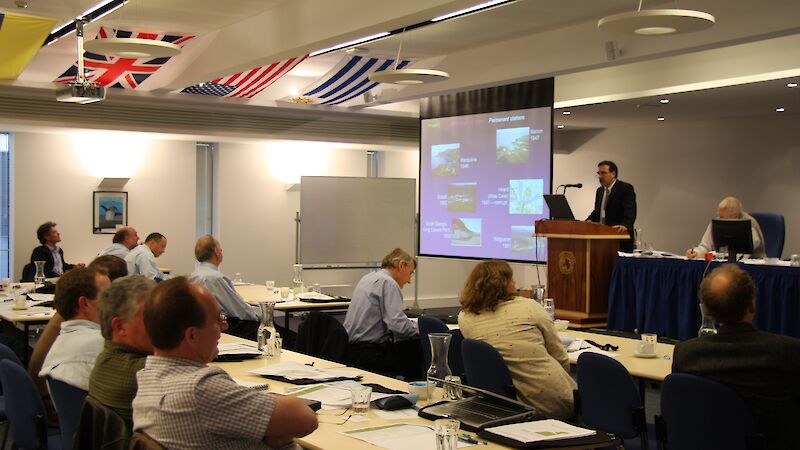The Second International Forum on the sub-Antarctic, held in Hobart in April, focussed on changes in the sub-Antarctic during the recent past (1800–1950), and changes in both science and environmental consciousness since 1950.
Several themes recurred during discussions amongst the 60 participants. Ocean acidification and its effects on both the marine food chain and the ocean’s ability to absorb atmospheric carbon dioxide, and the increasing likelihood of exotic species invading the region’s land masses, were seen as particularly unwelcome developments, likely to become more troublesome in the future. Discussions also included ‘fertilisation’ of the ocean with iron as a possible way to enhance phytoplankton growth, and ways in which terrestrial ecosystems can be managed to mitigate the effects of external change.
Research into the physical structure of sub-Antarctic waters, using small oceanographic sensing transmitters attached to the heads of seals, is revealing much about the complexity of the three-dimensional Southern Ocean and how it is exploited by elephant seals. Reanalysis of climate datasets from Macquarie Island, and elsewhere in the sub-Antarctic zone, reveals a complex pattern of increasing drying around Marion Island and increasing precipitation at Macquarie Island. Such changes are likely to intensify as the strength of westerly winds increase and as the northern limit of the Antarctic Circumpolar Current moves pole-wards. These major events will likely induce shifts in the parts of the ocean where various species of plankton are to be found, with concomitant changes in the feeding patterns of top predators.
The Royal Society of Tasmania will publish the proceedings of the Forum. A Third International Forum on the sub-Antarctic is expected to be held in Hobart in 2011.
MICHAEL STODDARTSub-Antarctic Forum Steering Committee

